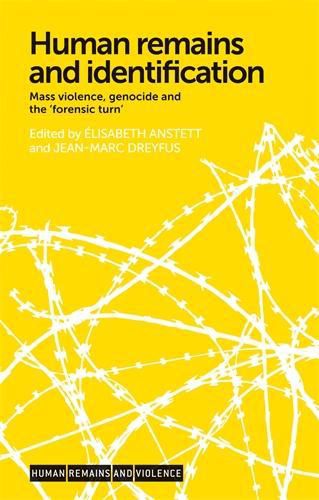Readings Newsletter
Become a Readings Member to make your shopping experience even easier.
Sign in or sign up for free!
You’re not far away from qualifying for FREE standard shipping within Australia
You’ve qualified for FREE standard shipping within Australia
The cart is loading…






Human remains and identification presents a pioneering investigation into the practices and methodologies used in the search for and exhumation of dead bodies resulting from mass violence. Previously absent from forensic debate, social scientists and historians here confront historical and contemporary exhumations with the application of social context to create an innovative and interdisciplinary dialogue, enlightening the political, social and legal aspects of mass crime and its aftermaths.
Through a ground-breaking selection of international case studies, Human remains and identification argues that the emergence of new technologies to facilitate the identification of dead bodies has led to a forensic turn , normalising exhumations as a method of dealing with human remains en masse. However, are these exhumations always made for legitimate reasons?
Multidisciplinary in scope, this book will appeal to readers interested in understanding this crucial phase of mass violence’s aftermath, including researchers in history, anthropology, sociology, forensic science, law, politics and modern warfare.
The research program leading to this publication has received funding from the European Research Council under the European Union’s Seventh Framework Programme (FP/2007-2013) / ERC Grant Agreement n Degrees 283-617. – .
$9.00 standard shipping within Australia
FREE standard shipping within Australia for orders over $100.00
Express & International shipping calculated at checkout
Human remains and identification presents a pioneering investigation into the practices and methodologies used in the search for and exhumation of dead bodies resulting from mass violence. Previously absent from forensic debate, social scientists and historians here confront historical and contemporary exhumations with the application of social context to create an innovative and interdisciplinary dialogue, enlightening the political, social and legal aspects of mass crime and its aftermaths.
Through a ground-breaking selection of international case studies, Human remains and identification argues that the emergence of new technologies to facilitate the identification of dead bodies has led to a forensic turn , normalising exhumations as a method of dealing with human remains en masse. However, are these exhumations always made for legitimate reasons?
Multidisciplinary in scope, this book will appeal to readers interested in understanding this crucial phase of mass violence’s aftermath, including researchers in history, anthropology, sociology, forensic science, law, politics and modern warfare.
The research program leading to this publication has received funding from the European Research Council under the European Union’s Seventh Framework Programme (FP/2007-2013) / ERC Grant Agreement n Degrees 283-617. – .